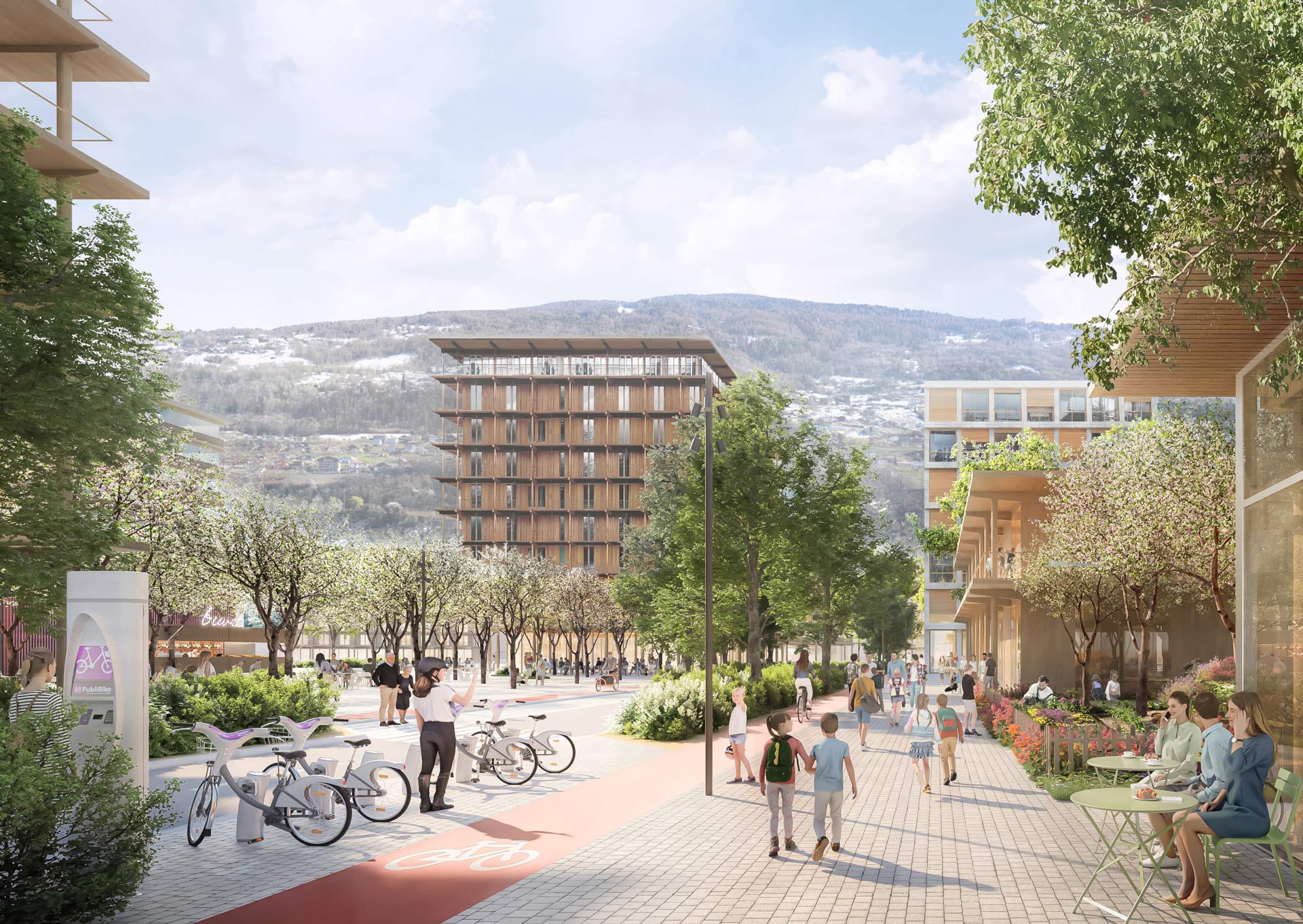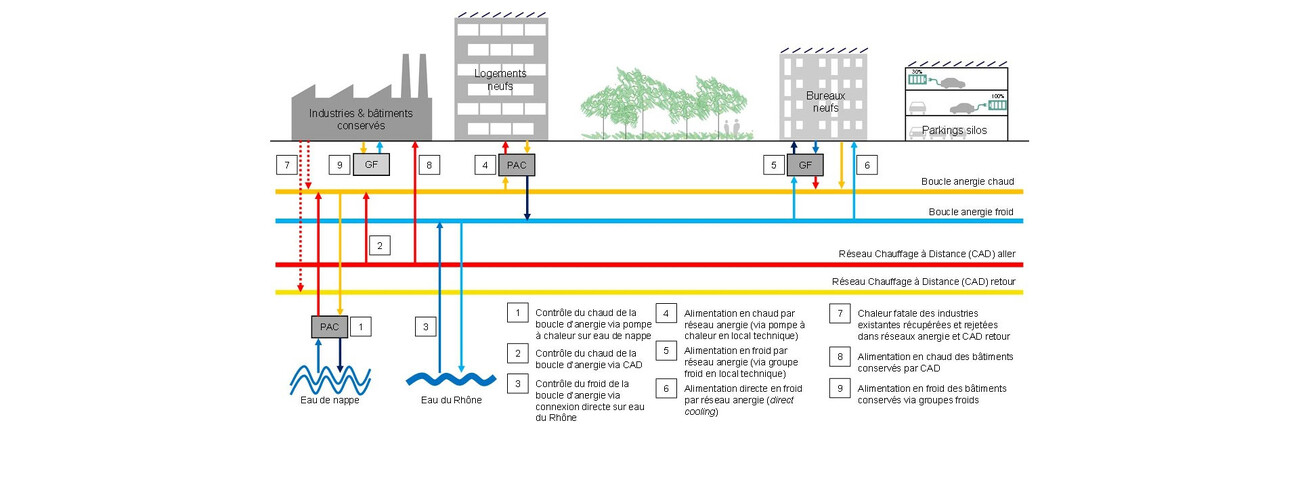Ronquoz 21 Masterplan, Sion, Switzerland

The city of Sion, located in the southwest of the canton of Valais, launched an international competition in 2019 with the goal of developing a masterplan for the Ronquoz district. Nestled in the heart of the valley, this neighborhood offers an ideal location due to its proximity to amenities, transportation infrastructure (train station and highway access), and the Rhône River, whose banks will be redeveloped. The challenge for this vast area of over 60 hectares, currently primarily industrial, is to place the Sion landscape at the heart of its territorial development and, over the next thirty years, transform it into the neighborhood of tomorrow—where people live, work, learn, and relax.
Transsolar joined the winning team—Herzog & de Meuron and Michel Desvignes Paysagistes—to integrate into the Masterplan a holistic environmental concept addressing the main pillars of sustainability, from the “macro” scale of the overall site plan to the “micro” scale of the residential unit. Urbanization is thus structured around a vast chain of parks and a forest belt stretching from east to west across the entire site, punctuated by water ponds, placing the landscape at the center of territorial development and providing a more pleasant microclimate.
In addition to their climatic benefits, the water ponds play a central role in water management. Rainwater collected from building rooftops is stored in tanks for reuse. Any overflow drains into the water ponds, which also collect road runoff that is treated through vegetated swales, ensuring phytoremediation.
Enclosed between the railway to the north and the highway to the south, office buildings serve as acoustic buffers for the residential buildings located further inside the masterplan. Thanks to their dual orientation, all dwellings receive direct natural light in winter, regardless of their location. In a context of decarbonization and use of existing energy networks, heating and cooling are supplied by a dual-pipe anergy loop, maintained at the necessary temperature using groundwater geothermal energy, water from the Rhône, and the district heating network (CAD). The CAD is supplied with heat from the waste incineration plant.
Electricity is provided through photovoltaic green roofs and the grid. The implementation of a neighborhood-scale smart grid allows for energy exchange between different programs, ultimately aiming for carbon neutrality.
Finally, urban gardens managed by residents and located in the heart of housing blocks promote local food production. These gardens, fertilized with green waste from the park chain, foster strong social sustainability among the neighborhood's residents.







